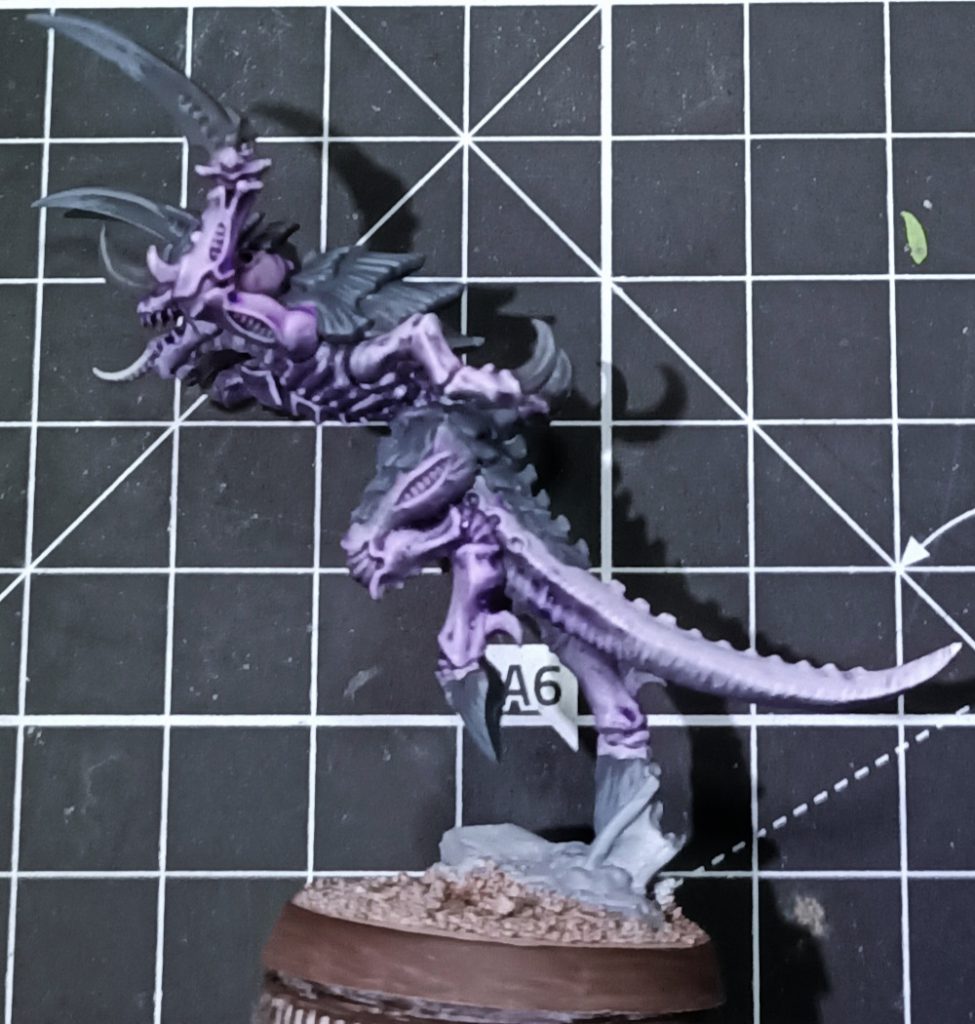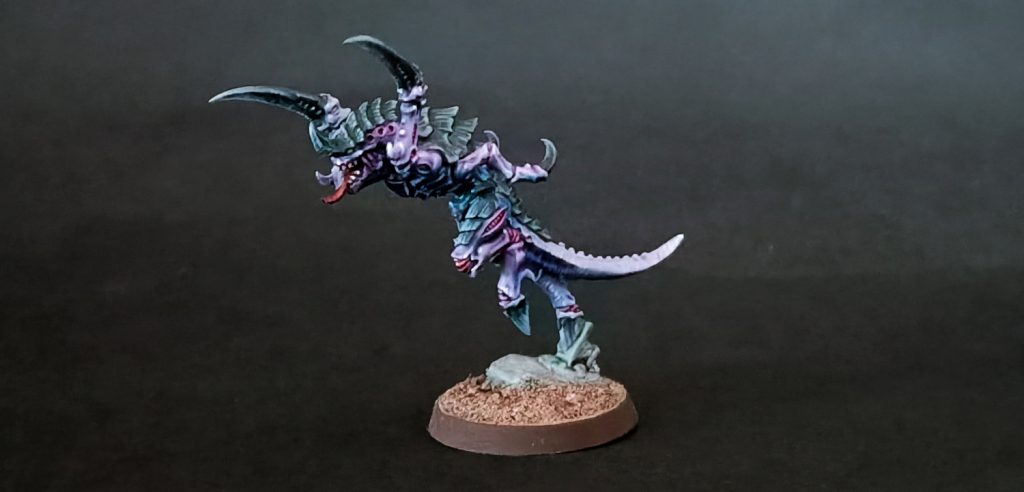This article is part of a larger series on How to Paint Tyranids. To return to that series, click here.

I love Hive Fleet Hydra’s paint scheme. The fleet’s primary colours – black and purple – can both be executed with high-performance Contrast paints, which makes it easy to paint; it’s a relatively unique colour scheme (not just within-faction but across all 40k factions); and it looks damn good. Here’s how I do it:

Step 1. Undercoat
Zenithal undercoat, using any black you want followed by Grey Seer.

Step 2. Basecoats
Do a single coat of Luxion Purple Contrast for everything that isn’t chitin or claws. The zenithal undercoat will help the contrast gradients here. Claws and Chitin are painted with your choice of a dark charcoal grey (I don’t think GW has a grey dark enough but you might get away with Eshin Grey, so I use Vallejo Black Grey (70.862) instead).

Step 3. Basic Highlights
For the flesh, edge highlight with a light purple (Dechala Lilac), with the option to blend in some off-white (Pallid Wych Flesh), I also do a little ‘hatching’ along the tail to build up an impression of texture. For the Chitin/Claws, just pick a lighter grey than your first (or add white to your previous grey) and edge highlight each panel. For the base, I try to make sure the colour choice complements/contrasts with the model, so I’m aiming for a rich, reddish brown to sit alongside the purple flesh of the model (Guilleman Flesh or Dark Oath Contrast).

Step 4. Additional Highlights and Details
For the flesh, either add more white to your purple highlight colour or just go straight to an off-white (Pallid Wych Flesh or Vallejo’s Silver Grey (70.883), which is my Secret Sauce for all painting) and do a little point-work here and there (just to emphasise points of articulation or the play of light on the model). For Chitin/Claws, just do another edge highlight with a lighter grey on a reduced area (you want to communicate a gradient of highlights), I also add a little hatching here and there for texture on the claws). Additionally, use a white or off-white to do the teeth, eyes and those ‘muscle divots’ you can see on the arms and legs.

Step 5. Final Details
Paint the eyes yellow (good contrast with purple), use Volupus Pink to wash the muscle divots, and water it down (yes, water not contrast medium) and wash a very small amount of it into the jaw muscles and where the gums meet the teeth. Use Talassar Blue sparingly as a diluted (water or contrast medium , doesn’t matter) wash for the underside of the model, you want this blue to accent the purple but not overwhelm it (My photos are perhaps a little saturated, it looks a lot more intense here than it does in real life). Additionally, step your Chitin/Claw grey highlight up another level and do another layer of highlights, this should be a very light grey but not pure white. As a final step, use Black Templar contrast to wash the claws/chitin plates, with an emphasis on letting it pool in the recesses rather than darkening your highlights.

Job’s done. Contrasts made this relatively quick, which is a key consideration for playing and painting ‘Nids. Now get out there and start devouring (greatly).
This article is part of a larger series on How to Paint Tyranids. To return to that series, click here.

